We all know the thrill of googling our own business and seeing it appear on the first page of search results.
But for many, the journey to that top spot seems like a complicated and arduous task. This doesn’t have to be the case.
Today, we’re going to simplify one of the most vital aspects of SEO – on-page SEO. And will know how to rank higher using On-Page SEO.
Moreover, we’ll be looking at a specific case – a fire safety company looking to boost its online presence.
Unpacking the Client’s Requirements- Case Study
Our client operates in the fire safety industry. Their focus is two-fold – selling fire alarms and providing installation services.
This being a competitive field, their desire to rank higher on Google for keywords like ‘fire alarm’ and ‘fire extinguisher’ is understandable. With an additional aim to target various locations, including Kildare, our task was cut out for us.
Before knowing how to rank higher using On-Page SEO, you need to understand the cornerstone of a good SEO strategy, that’s understanding what the client wants.
Our client’s business model revolved around selling high-quality fire alarms and providing professional installation services.
They were keen to rank higher in search results for a handful of targeted keywords.
The primary ones included ‘fire alarm’, ‘fire extinguisher’, and a few more related to their service offerings.
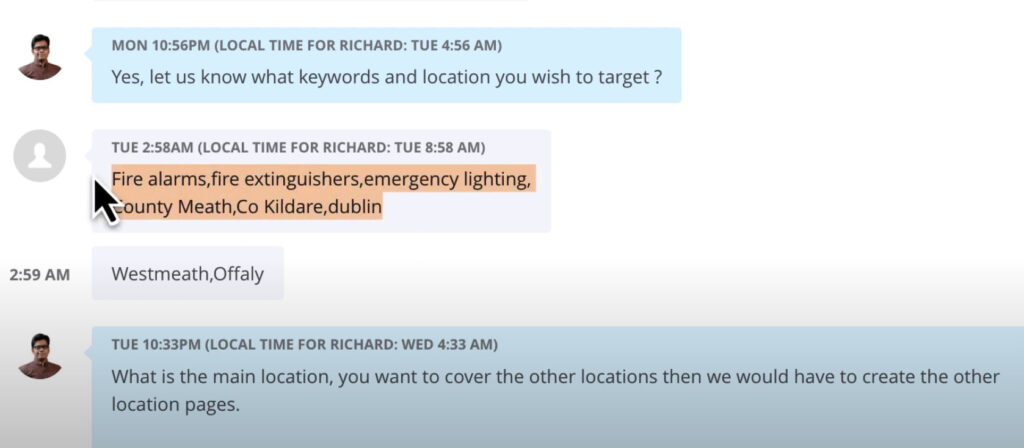
Targeting specific locations was another aspect of their business strategy. They wanted to capture the market in various places, with Kildare being a top priority.
Knowing what they wanted allowed us to formulate a tailored strategy for on-page SEO.
Check out the site here SureFire Safety
Overcoming the Challenge
The challenge at hand was multi-faceted.
Firstly, the client’s website was a single-page site. Single-page sites, while sleek and user-friendly, pose certain SEO difficulties.
Primarily, it is harder to optimize them for a variety of keywords. In addition, our client had the aspiration to rank in multiple locations.
These tasks certainly were daunting, but not impossible.
The keywords chosen for this particular case were quite competitive, further complicating our challenge.
Ranking higher for words like ‘fire alarm’ and ‘fire extinguisher’ required a well-thought-out plan and strategic implementation.
Outsmarting the Competition: The Strategy
Implementing the right strategy was crucial for overcoming these challenges.
The strategy was to enhance the on-page SEO by improving content, optimizing title tags and meta descriptions, and integrating keywords strategically.
By taking a deep dive into on-page SEO, we can certainly increase the chances of ranking higher on search engines.
It involves enhancing individual web pages, optimizing both the content and HTML source code.
The aim is to make the site more relevant to search engines, while also providing value to the visitors.
The strategic use of keywords is another crucial element.
Sprinkling relevant keywords throughout the content, in the title, and meta descriptions, allows search engines to understand what your page is about.
But remember, it’s essential to keep it natural and avoid keyword stuffing.
Related article: 17 copywriting tips that’ll compel your audience to make a purchase or give you a lead
Building a Robust SEO Strategy
The roadmap to how to rank higher using on-page SEO mastery begins with a solid strategy.
Our challenge was to help a single-page website rank for multiple locations and competitive keywords.
The solution?
Creating separate location pages for each target area, optimizing the website’s meta titles and descriptions with keywords, and incorporating other vital on-page SEO elements such as H1 tags.
- Creating Location Pages: We decided to create individual pages for each of the client’s target locations. This strategy allows each page to be optimized for its respective location-specific keywords. Additionally, it ensures that the website offers valuable content to visitors from all target areas
- Optimizing Meta Titles and Descriptions: Meta titles and descriptions are pivotal in how search engines understand and rank your webpage. By incorporating the targeted keywords into these elements, we could signal the page’s relevancy to search engines, thus boosting its chances of ranking higher.

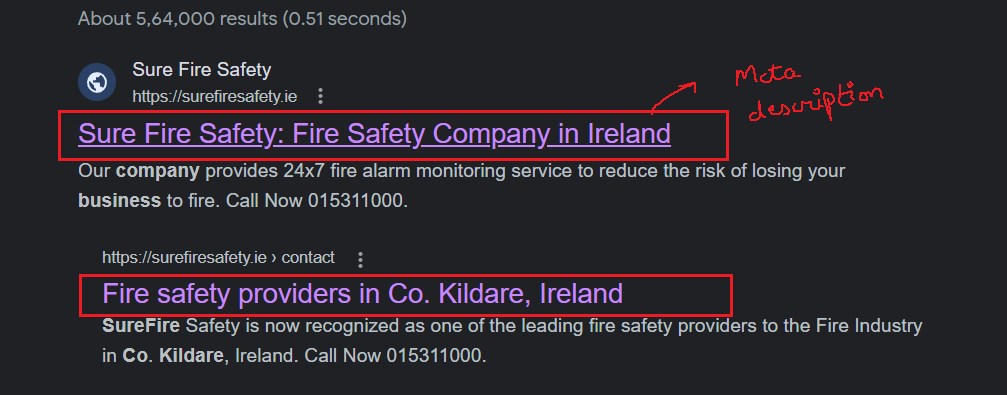
- Incorporating On-Page SEO Elements: Besides the meta title and description, other on-page elements like the H1 tag also contribute to the page’s SEO. We ensured that these elements were optimized as well to enhance the overall SEO of the page.
Implementing the SEO Strategy: A Step-by-Step Guide
Let’s break down the implementation process.
With a clear strategy in place, the next step was putting it into action. We made use of an SEO plugin and incorporated an intelligent use of related phrases for keyword research.
- Creating an Optimized Meta Title: The meta title is often the first thing that potential visitors see on the search engine results page (SERP). We made sure that the title contained all the target keywords to enhance its SEO.

- Writing an Effective Meta Description: Using a tool called Link Reader, we crafted a compelling meta description. Like the meta title, the description also contained the targeted keywords to help boost the page’s SEO.

- Installing the Yoast SEO Plugin: To facilitate the on-page SEO process, we made use of the Yoast SEO plugin. This tool provides a plethora of features that can help optimize a website for search engines.

- Editing the Page: With the meta title and description ready, the next step was to integrate them into the webpage. This involved copying the meta title and description and pasting them into the appropriate sections of the page.

- Keyword Research: We used the “Get Related Phrases” feature to conduct comprehensive keyword research. This helped us discover additional phrases related to the primary keywords, enhancing the overall SEO of the page.
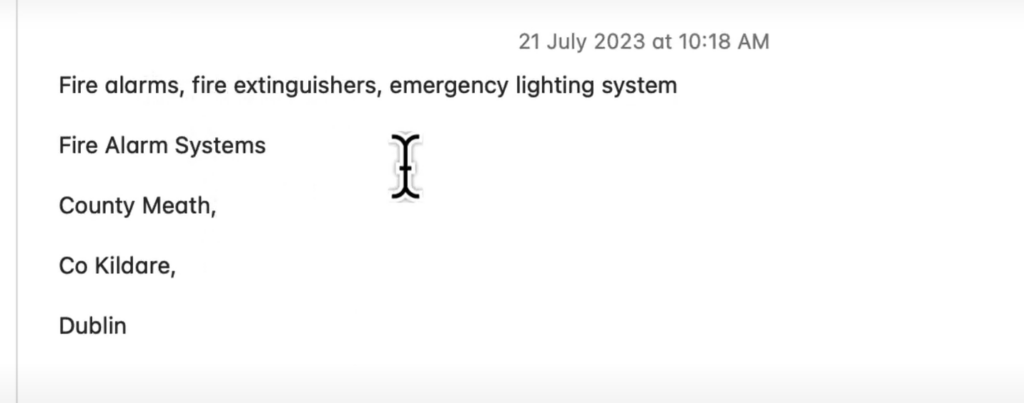
Enhancing the Webpage for Superior Results
Finally, we made a few critical changes to the webpage itself. These adjustments focused on low-competition keywords, tags, and aesthetic elements, all aimed at improving on-page SEO.
- Targeting a Low-Competition Keyword: To improve the chances of ranking higher, we decided to target a low-competition keyword in addition to the primary, competitive keywords.

- Adding an H1 Tag and Meta Description: Each page should have one unique H1 tag, which helps search engines understand the content of the page. We ensured this was implemented, along with the meta description.

- Tweaking the Aesthetics: We also changed the font and color of the H1 tag to improve the visual appeal and readability of the page.
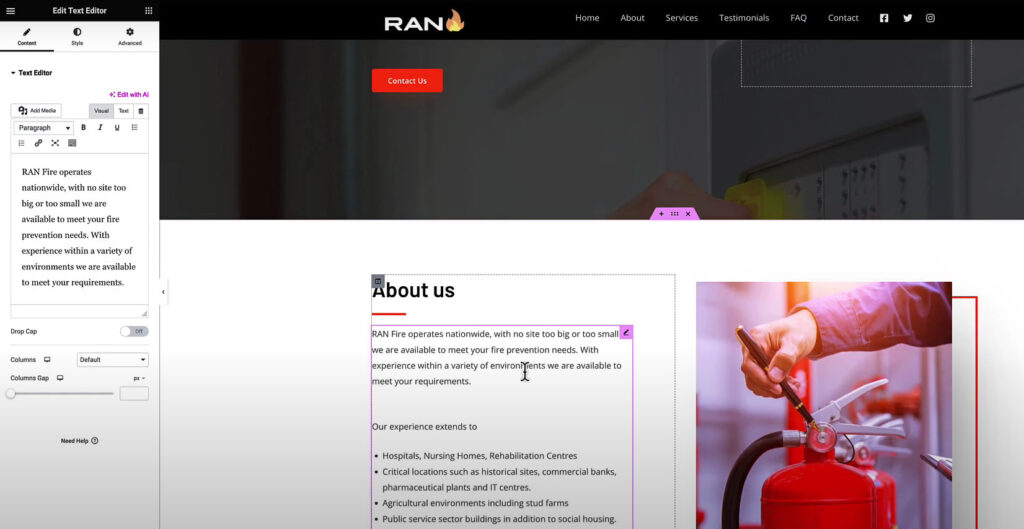
- Optimizing Images: Lastly, we added location information and alt tags to the images on the webpage. Alt tags help search engines understand what an image is about, thus improving the page’s SEO.
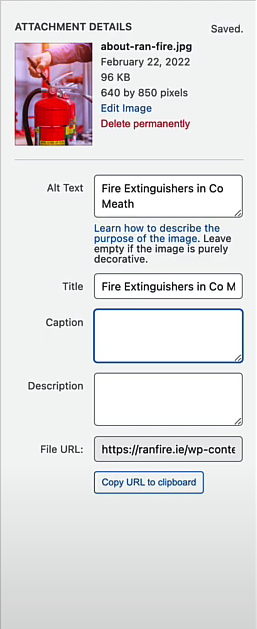
Elevating Website Aesthetics through Image Optimization
The path to rank higher using On-Page SEO isn’t just about written content. It’s also about the images on your website. Image optimization is a key strategy that not only enhances the user experience but also contributes to your site’s SEO.
- Leveraging Relevant Keywords: When it comes to images, it’s not just about their visual appeal. Including keywords related to your product or service in your image file names and alt text can enhance your SEO. In our case, we used keywords related to fire alarms and emergency lighting.
- Using Text Formatting: Bold or italicized text can draw attention to important information. However, they can also signal to search engines that this text is significant, contributing to your page’s SEO. In our case, we used this technique judiciously to highlight our key services and offers.
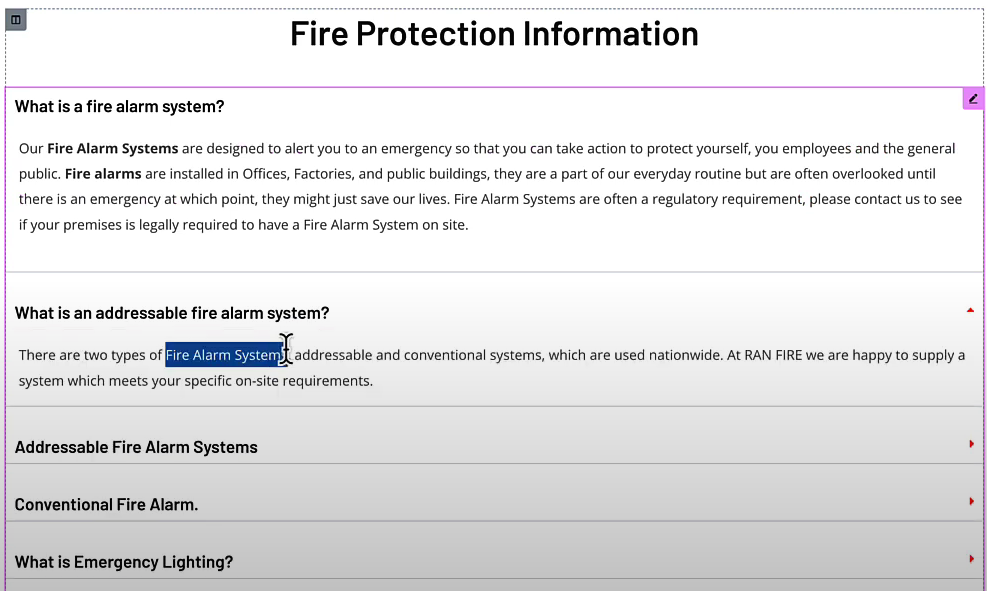
Also Check out: The Insanely Simple SEO Strategy (The Orchard Strategy)
Boosting Your Site’s Reach with Strategic Keyword and Location Incorporation
The incorporation of location-specific keywords into your website is crucial for local SEO. Let’s break down how you can target specific locations and check your site’s responsiveness across devices.
- Localizing Your Keywords: We targeted various locations, including Co Meath, Co Kildare, and Dublin, and also targeted customers nationwide. By incorporating these locations into our keywords, we managed to attract more local searches.

- Ensuring Consistent Performance across Devices: It’s essential to ensure your site looks and functions well on all devices, as this contributes to the overall user experience, which is a factor in your SEO ranking. We checked the response and headline of our fire alarm security system across various devices to ensure consistency.
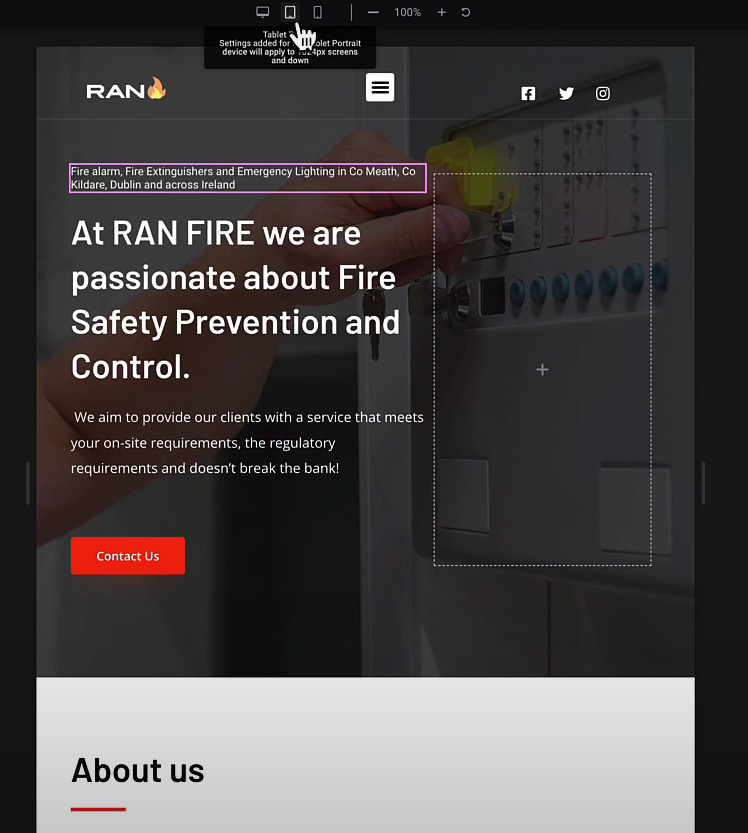

Mastering Google Ranking: Understanding DA, Backlinks, and Competitive Keywords
Ranking websites on Google is a multifaceted process that involves understanding the role of domain authority (DA), the importance of backlinks, and the need for targeting competitive keywords.
- Understanding Domain Authority and Backlinks: DA is a search engine ranking score that predicts a website’s ability to rank on search engine result pages (SERPs). Sites with a higher number of quality backlinks generally have a higher DA. We focused on improving our website’s DA through quality backlinks to improve our ranking.
Related article: How to Build Backlinks in Less Than 1 Hour
- Targeting Competitive Keywords: Targeting competitive keywords related to our services, such as “fire alarms” and “fire extinguishers,” helped us rank higher in search results for these terms.
- Making Use of the Search Console: Finally, submitting our site to Google’s Search Console helped us monitor our site’s presence in Google’s search results and optimize its visibility.
Expanding Your Digital Toolset: Implementing Google Analytics
Google Analytics can provide vital insights about your website’s performance and help you optimize your SEO strategies. With this, you can track how much work is left for you.
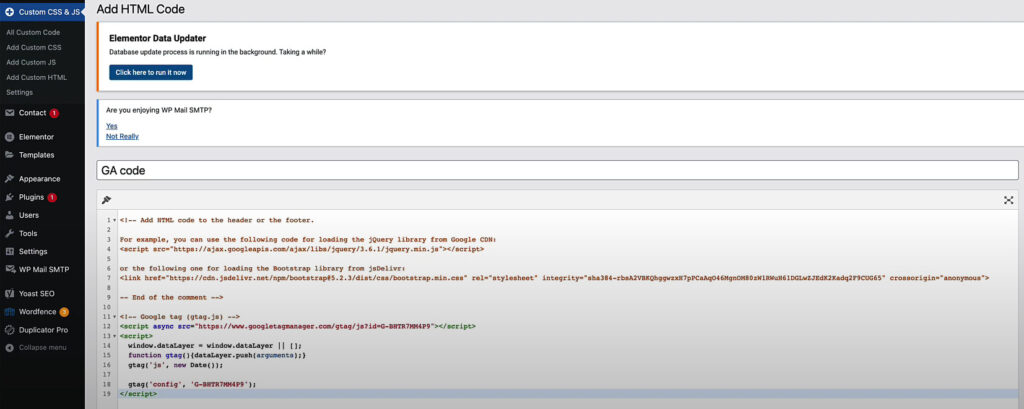
Let’s explore the steps you need to take to integrate it into your website.
- Property Verification in Search Console: To use Google Analytics, you must first verify your website in Google Search Console. This process confirms that you are the legitimate owner or administrator of the site.
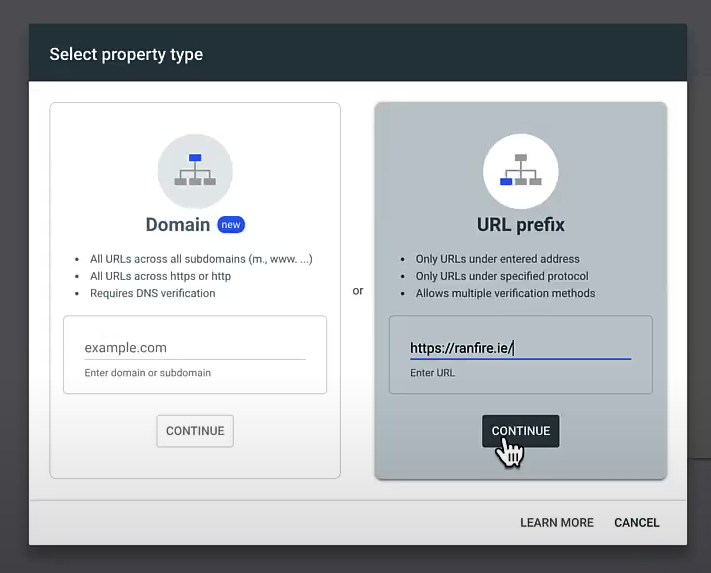
- Submitting a Sitemap: Once your site is verified, the next step is to submit a sitemap to Google. A sitemap is essentially a map of your website that guides search engines to all your important pages. By submitting your sitemap, you help Google’s algorithms to crawl and index your site effectively.

Tracking Your Success: Monitoring Changes and Results
Understanding how to rank higher using On-Page SEO is just not enough, you need to check that your strategies are on right track or not.
To maximize your SEO efforts, it’s essential to track your changes and measure the results. This will give you valuable insights into what’s working and what’s not.
- Checking the Metadata Description: Your website’s metadata description is what appears in search results below the page title. It’s important to regularly check this to ensure it accurately reflects your content and includes your target keywords.
Related article: 13 best ways to improve your SEO Copywriting
- Monitoring Keyword Rankings: After implementing changes, use Google to search for your specific keywords. If your changes have been indexed by Google, your website should appear in the search results.
- Awaiting and Analyzing Results: SEO improvements can take time to reflect in search rankings. Patience is key here. Once you start seeing results, analyze the effect of the updated metadata on your search rankings. This information will be instrumental in shaping your future SEO strategies.
We found that the website ranked on page 1 for the keywords “fire extinguisher in co meath” and “fire alarm in co meath” but on page 2 for “emergency lighting in co meath”.
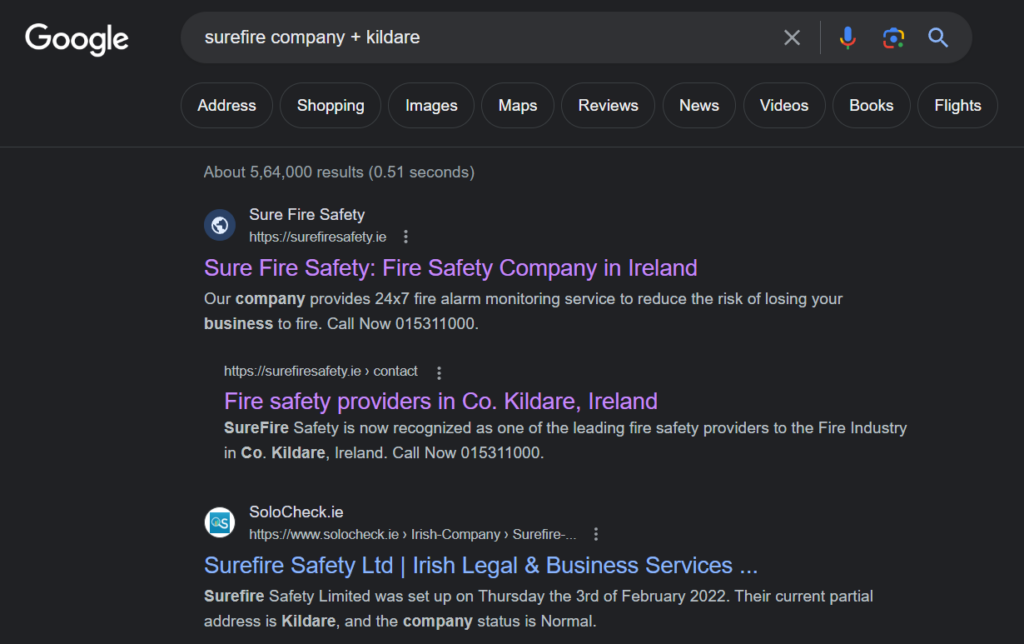
This showed us that our on-page SEO efforts were starting to pay off.
Recap and Next Steps: Your Roadmap to SEO Success
We’ve taken you through a comprehensive journey on how to rank higher with on-page SEO, starting from the basics of understanding and integrating Google Analytics, to tracking and analyzing your SEO efforts.
Want to know how AI can be used for getting better results in your SEO efforts?
Check out: Role of AI in SEO: 16 AI tools every marketer must know
You’ve now got all the tools at your disposal to take control of your website’s SEO, understand how to rank higher using On-page SEO and drive more organic traffic to your site.
Remember, the world of SEO is constantly evolving. Staying up-to-date with the latest trends and strategies is crucial to maintaining and improving your search engine rankings.
For more insights into digital marketing, SEO, and website building, consider subscribing to our blog. We regularly share valuable tips and strategies to help you succeed in your online endeavors.
Frequently Asked Questions
1. What is on-page SEO?
On-page SEO refers to the practice of optimizing individual web pages to rank higher and earn more relevant traffic in search engines. This includes both the content of the page and the HTML source code.
2. How can Google Analytics help with my SEO efforts?
Google Analytics provides valuable insights into your website’s performance. It can help you understand how users are interacting with your site, what content is performing well, where your traffic is coming from, and much more. These insights can guide your SEO strategies and help you make data-driven decisions.
3. Why do I need to verify my property in Google Search Console?
Verifying your property in Google Search Console confirms that you’re the owner or administrator of the site. It’s an important step in being able to use Google Analytics, as well as providing access to other Google tools and insights related to your website’s performance in Google Search results.
4. What is a metadata description and why is it important?
A metadata description, or meta description, is a summary of a web page’s content. It appears in search engine results below the page title and URL. A compelling and accurate meta-description can influence click-through rates from search results and contribute to improved search engine rankings.
5. How long does it take for SEO changes to reflect in search rankings?
SEO is a long-term strategy, and changes can take time to show in search rankings. This time frame can vary from a few days to several months, depending on various factors including the competitiveness of your keywords, the age of your website, and the frequency at which search engines crawl your site.
6. How do I stay up-to-date with the latest SEO trends and strategies?
Staying updated with SEO trends and strategies involves constant learning. You can subscribe to SEO and digital marketing blogs, attend webinars or conferences, take online courses, or follow industry experts on social media. You can also subscribe to our blog for regular updates and insights into the world of SEO.
7. Can I implement these on-page SEO strategies on my own?
Yes, you can implement many of these strategies yourself, especially if you’re using a website platform that has built-in SEO tools. However, SEO can be complex and time-consuming, so many businesses choose to work with an SEO specialist or agency.
8. Why is the sitemap important for SEO?
A sitemap helps search engines navigate your website and index your content. By providing a clear path for search engines, you can improve your website’s visibility in search results. This is particularly important for large websites or websites with a lot of content.




